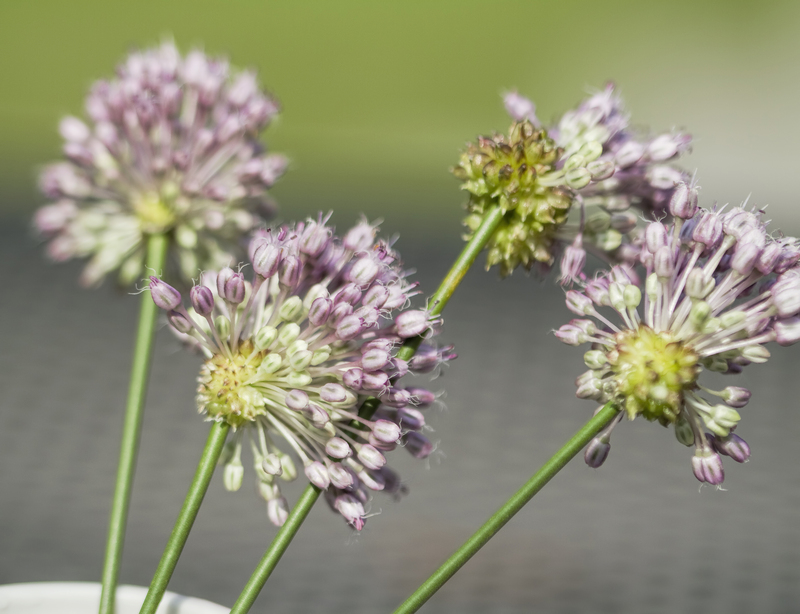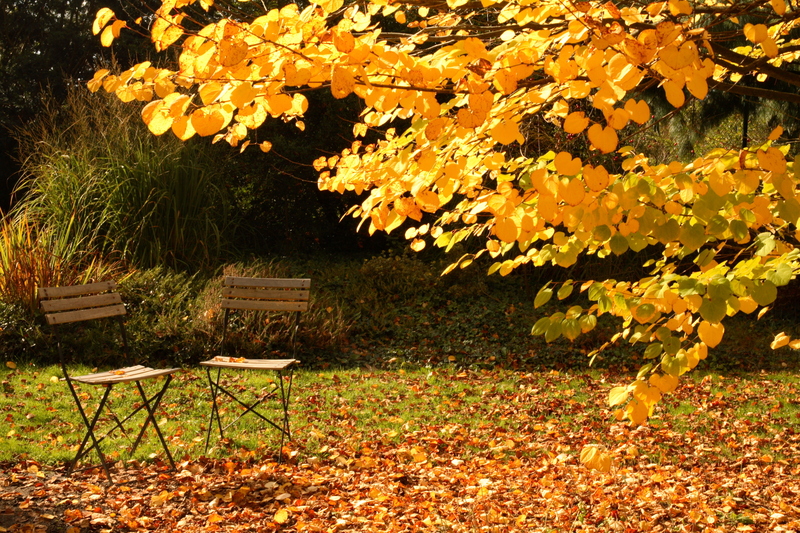Vertical Gardening: Cultivating Beauty and Sustainability
Posted on 16/06/2025
Vertical Gardening: Cultivating Beauty and Sustainability
Are you seeking innovative ways to maximize your green space or eager to contribute positively to our planet? Vertical gardening is a dynamic, eco-friendly solution that not only beautifies your environment but also enhances sustainability. Whether you live in a compact apartment or tend a spacious backyard, this guide explores everything you need to know about vertical gardens, from their advantages to practical steps for cultivation, eye-catching design ideas, and their impact on our environment.
What is Vertical Gardening?
Vertical gardening, also known as "living walls" or "green walls," involves growing plants upward on a vertical surface instead of spreading them out horizontally in traditional soil beds. This green innovation is transforming urban landscapes worldwide, making it possible to cultivate lush gardens even in the tiniest places.
Why Choose a Vertical Garden?
There's more to vertical gardening than its visual allure. Let's explore top reasons to embrace vertical gardens:
- Efficient Use of Space -- Perfect for apartments, balconies, and small patios, vertical gardens allow gardening in spots once deemed unusable.
- Air Quality Improvement -- Living walls naturally filter polluted air, delivering cleaner oxygen to your surroundings.
- Thermal Insulation -- A vertical garden can help regulate indoor temperature, lowering energy consumption.
- Biodiversity Enhancement -- They attract pollinators like bees and butterflies, fostering urban wildlife.
- Food Production -- Grow fresh herbs, veggies, and fruits, ensuring access to healthy organic produce.

Benefits of Vertical Gardening for Homes and Cities
*Vertical gardening* presents both aesthetic and environmental advantages:
Beautify Your Space
- Visual Impact: Living walls transform plain facades into vibrant, living art pieces. Their lush textures and colors create stunning focal points indoors and outdoors.
- Privacy and Screening: Strategically placed vertical gardens can offer natural privacy screens, turning balconies and terraces into tranquil sanctuaries.
Support Urban Sustainability
- Reducing Urban Heat: Vertical gardens absorb sunlight, keeping buildings cooler and reducing the "heat island" effect common in cities.
- Stormwater Management: Living walls can reduce runoff by absorbing rainwater, preventing flooding and lowering the burden on city drainage systems.
- Noise Buffering: Dense plantings on walls help dampen urban noise, making your environment more peaceful.
Mental and Physical Well-being
- Stress Reduction: Being around greenery has proven psychological benefits, reducing stress and boosting mood.
- Inspiring Creativity: Vertical gardens spark innovation, turning everyday walls into living masterpieces.
- Enhanced Productivity: For offices, living walls can heighten concentration and creativity among employees.
Types of Vertical Gardens: Creative Approaches and Setups
*Vertical gardens* come in various forms, from simple DIY solutions to high-tech, automated systems. Consider these popular styles:
1. Green Walls with Modular Panels
- These systems use individual panels filled with soil or felt pockets. They're easy to install, maintain, and swap out for seasonal plantings.
2. Trellis and Climbing Plant Support
- Train vines such as jasmine, clematis, or ivy up a trellis or wire grid to create a vertical tapestry of foliage and blooms.
3. Wall-mounted Pots and Planters
- A flexible, cost-effective solution, this approach uses staggered pots or recycled containers affixed to walls or fencing.
4. Hydroponic Vertical Systems
- Ideal for urban food production, these closed systems feed plants with a water-and-nutrient solution, using no soil at all.
5. Hanging Pocket Gardens
- Fabric or felt planters with individual pockets are hung on walls, creating an instant green curtain.
How to Start Your Own Vertical Garden
Ready to cultivate your own vertical sanctuary? Follow these step-by-step guidelines for a flourishing vertical garden:
Assess Your Space
- Choose the Location: Indoors or outdoors? North or south-facing? Sun exposure and wind are crucial factors.
- Check Wall Strength: Ensure your chosen wall is sturdy enough to support the extra weight of soil, plants, and water.
Choose Your System
- DIY or Kits: Many prefabricated vertical garden kits are available, or you can get creative using pallets, shoe organizers, or recycled bottles.
- Soil or Hydroponic: Decide whether you prefer the simplicity of soil or the advanced efficiency of hydroponics.
Selecting the Right Plants
When selecting plants for your vertical garden, keep these criteria in mind:
- Light Requirements: Match plants to available sunlight.
- Size and Growth Habit: Opt for compact or trailing species that thrive in confined spaces.
- Maintenance Needs: Choose low-maintenance varieties to ensure a thriving garden with minimal effort.
Excellent Plant Choices for Vertical Gardens
- Herbs: Basil, mint, thyme, parsley, chives
- Flowers: Petunias, ferns, begonias, pansies, impatiens
- Vegetables: Lettuce, spinach, cherry tomatoes, strawberries, peppers
- Vines & Trailers: English ivy, pothos, philodendron, creeping fig
- Succulents: Sedum, echeveria, sempervivum
Building and Planting
- Install the Framework: Secure panels, trellises, or planters to your chosen surface.
- Add Growing Medium: Use high-quality potting mix, felted material, or hydroponic substrates.
- Plant Strategically: Place trailing or cascading species at the top and slower-growing, compact varieties below.
Caring for Your Vertical Garden
- Watering: Vertical gardens often dry out faster than traditional beds--self-watering systems can be a smart investment.
- Feeding: Regularly apply liquid fertilizer, especially for dense plantings.
- Pruning: Trim back overgrowth to maintain airflow and visual appeal.
- Pest Control: Watch for pests or disease, treating organically when possible.
Creative Vertical Garden Ideas for Any Space
Upcycled and DIY Vertical Gardens
- Repurposed Pallet Gardens: Stand a wooden pallet vertically, attach landscape fabric to the back and sides, fill with soil, and plant between the slats.
- Hanging Shoe Organizer: Fill the pockets of a canvas shoe organizer with soil and herbs--it's ideal for classrooms, kitchens, or balconies.
- Plastic Bottle Towers: Stack recycled bottles, cutting holes for planting herbs, lettuce, or strawberries.
Balcony and Indoor Vertical Gardening
- Small-Space Living: Hang rows of planters from the railing to grow a compact balcony vegetable garden.
- Living Art Frames: Mount shadow-box frames with succulents and moss for a touch of indoor nature.
- Wall Plant Pockets: Use felt or wool pockets on bedroom or kitchen walls for fresh herbs at your fingertips.
Luxury & Commercial Green Walls
- Offices or homes can enjoy automated hydroponic wall systems complete with a timer, grow lights, and self-watering--elevating decor while supporting well-being.
- Hotel Lobbies & Restaurants: Businesses use vertical gardens as a statement piece, underscoring their sustainability policies and attracting eco-conscious clients.
Sustainability Impact: How Vertical Gardening Supports the Environment
Water Efficiency
- Many vertical gardening systems recirculate water, consuming up to 80% less water than conventional gardens.
- Soil evaporation is reduced, and soilless (hydroponic) systems optimize the direct delivery of nutrients and hydration to roots.
Cleaner Air and Urban Livability
- Research shows that living walls absorb toxins and dust, combat indoor and outdoor air pollution, and increase overall oxygen levels.
- Vertical greenery can even trap particulate matter and help cool surrounding air, vital in densely built environments.
Habitat Restoration
- Vertical gardens create new niches for birds, insects, and pollinators, encouraging biodiversity in areas that might otherwise lack green spaces.
Reducing Carbon Footprint
- Growing your own food via a vertical edible garden reduces food miles and packaging waste while assuring organic, clean harvests.
Common Challenges and Pro Tips
Vertical Gardening Hurdles
- Moisture Management: Preventing over- or under-watering is crucial--self-watering reservoirs or drip irrigation work well.
- Structural Concerns: Always check the load your garden adds to walls or railings.
- Plant Selection: Not all species thrive vertically; choose accordingly and experiment!
Expert Vertical Gardening Tips
- Start Small: Begin with a manageable frame or a few planters, then expand as your confidence grows.
- Mix Textures and Colors: Combine trailing, upright, and flowering varieties for dynamic visual interest.
- Monitor Sun and Water: Use a moisture meter and rotate plants to ensure even light exposure.
- Embrace Upcycling: Repurpose household items--old crates, pipes, containers--giving them new life as plant holders.

Future of Vertical Gardening: Growing Toward Greener Cities
As cities densify and demand for fresh produce rises, vertical garden systems are set to play a pivotal role. Living walls are being integrated into city planning, high-rises, schools, and offices, promoting sustainability, health, and beauty everywhere humans inhabit.
Innovations like automated hydroponics, renewable materials, and "smart" irrigation will only make vertical gardening more accessible and sustainable. By embracing these green solutions, we can collectively create healthier environments--and a verdant legacy for future generations.
Conclusion: Cultivate Your Living Wall Today
*Vertical gardening* is a transformative practice, merging aesthetics, environmental stewardship, and practical gardening in compact or urban spaces. Whether you're driven by design, sustainability, or the joy of homegrown food, a vertical garden offers boundless potential. Bring your space to life, reduce your carbon footprint, and reap the health, ecological, and therapeutic benefits--one wall at a time.
Ready to embark on your vertical gardening journey? There's never been a better time to green your world with a living work of art.

